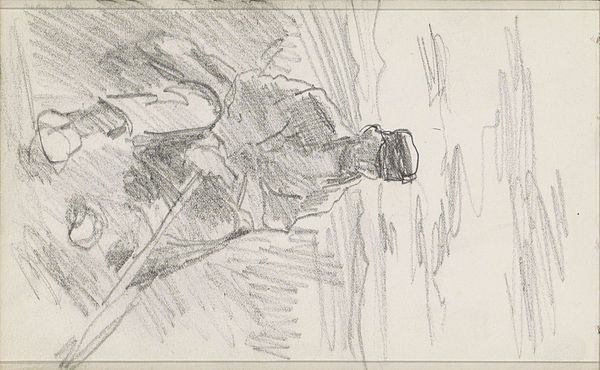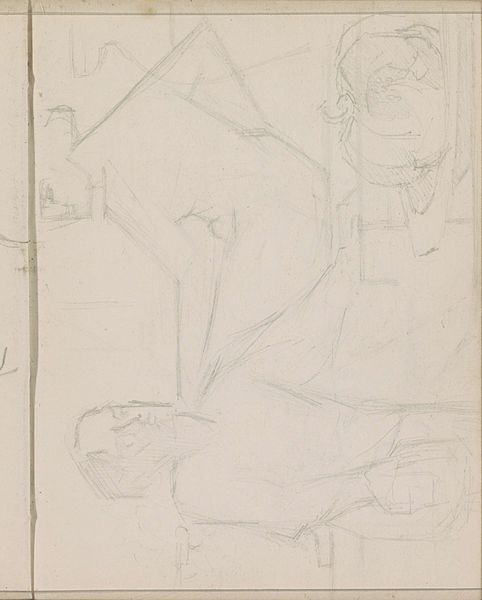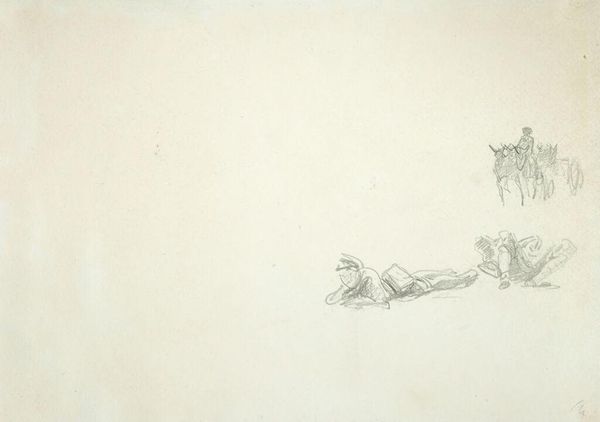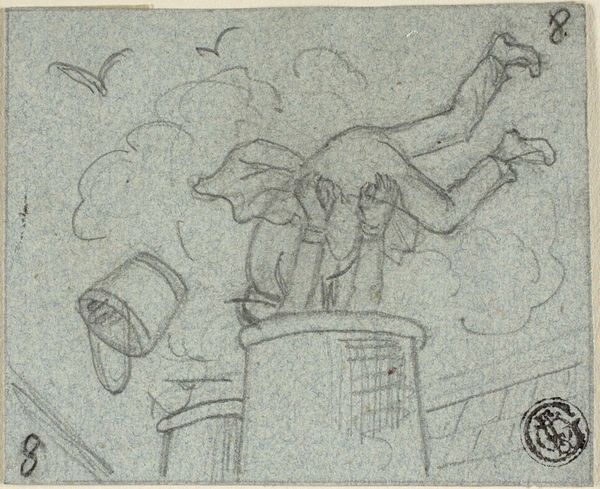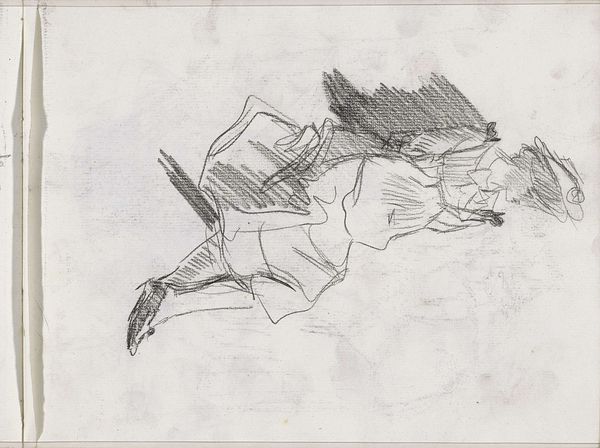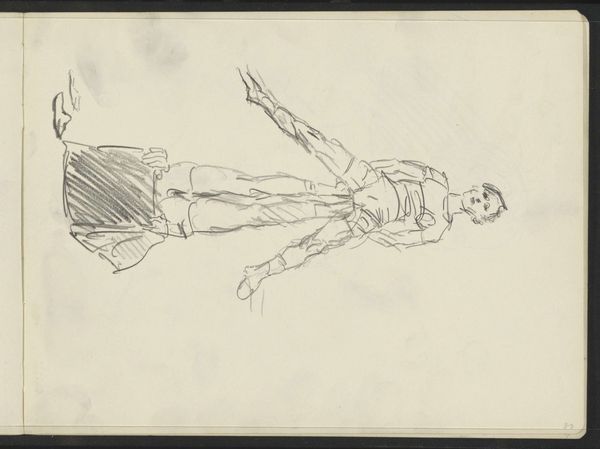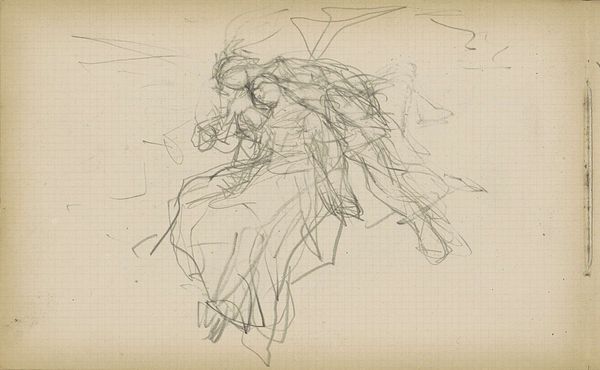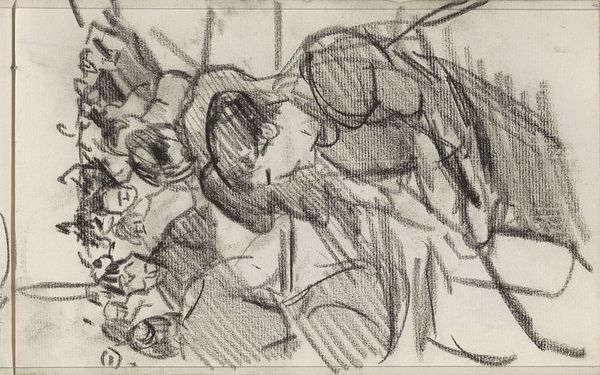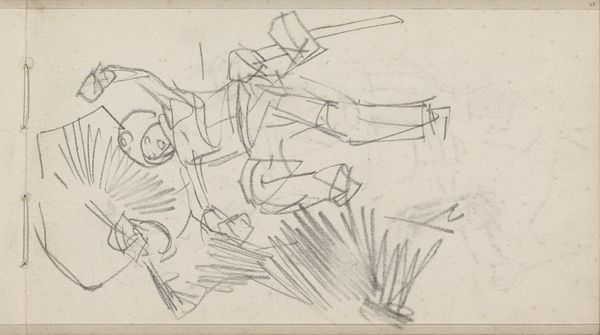
drawing, pencil
#
drawing
#
neoclacissism
#
figuration
#
pencil
#
line
#
history-painting
Copyright: Public Domain: Artvee
Editor: This is "Figure Astride Cannon Pulling Down Spanish Colors," a pencil drawing made between 1785 and 1786 by John Singleton Copley. The figure is positioned in such a dynamic way. What historical narratives or political undertones are embedded within it? Curator: Indeed, the dynamism you observe reflects the evolving public role of art in the late 18th century. Copley, though American-born, made a career in London, often focusing on grand historical narratives. Consider the very title— "Pulling Down Spanish Colors." It's charged, isn't it? Editor: Absolutely. The act itself signifies a rejection of Spanish colonial power, perhaps an assertion of emerging national identities. Curator: Precisely! How do you think this drawing engages with the burgeoning sense of British identity at that time? Editor: I’d say it's visually expressing nationalistic pride and dominance through historical depiction. Copley is really playing into that historical context and shaping the imagery to promote that view. Curator: It’s intriguing how artists negotiate their identities and allegiances through their work. But, think about this: Copley eventually faced criticism for not accurately representing historical events. Editor: That really makes you think about the museum space itself; how it might legitimize and exhibit works based on the artist's interpretation and cultural views, even if they are, at times, politically controversial or historically inaccurate. Curator: And that awareness is crucial! What we deem "history" and how it’s presented is always a negotiated narrative. I’m glad we could share ideas, it's something to really consider when understanding historical artworks in a social climate. Editor: Me too, the politics of art and its perception by the public makes the study more captivating.
Comments
No comments
Be the first to comment and join the conversation on the ultimate creative platform.
